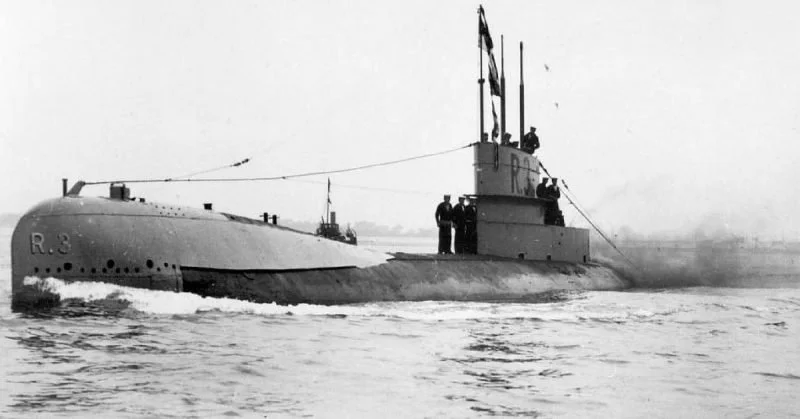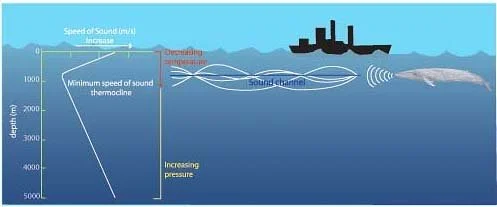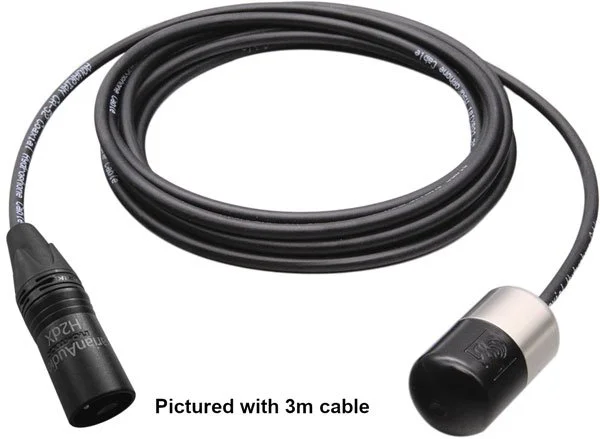Hydrophone Microphones for Field Recording | Guide & Recommendations
The ultimate guide to hydrophone microphones; uses, design, history, and recommendations.
A hydrophone is a type of microphone designed to be used underwater to detect and record sound.
It operates by converting sound waves in water into electrical signals that can be recorded or transmitted.
Hydrophones are commonly used in underwater acoustics research, field recording, marine biology, and by the military for submarine detection.
What Is A Hydrophone?
A hydrophone is an underwater microphone that is used to detect and measure sound waves in water.
It consists of a piezoelectric material, such as quartz or ceramics, that vibrates in response to underwater sound waves.
This vibration generates an electrical signal that can be amplified and analyzed to determine the characteristics of the sound waves.
Advantages:
One of the key advantages of hydrophones is their ability to accurately measure the frequency and amplitude of underwater sound waves.
This is important for a wide range of applications, as different underwater sounds have different characteristics that can be used to identify their source.
For example, the frequency and amplitude of a sound wave can be used to determine the size and type of a marine mammal, or the speed and direction of a ship.
Another advantage of hydrophones is their ability to detect low-frequency sounds that are inaudible to human ears.
This is particularly useful for monitoring underwater activities, such as earthquakes and volcanic eruptions, as these events often generate low-frequency sound waves that can be detected by hydrophones.
In addition, hydrophones can also be used to detect underwater noise pollution, which can have a significant impact on marine life and ecosystems.
Disadvantages:
Despite their advantages, there are also some challenges associated with using hydrophones.
One of the main challenges is their high self-noise. While some hydrophones are quieter than others, in general, they are noisier than other types of microphones, especially those designed for quiet environments.
To overcome this challenge, hydrophone arrays are often used, which consist of multiple hydrophones that are spaced apart and used in combination to improve the signal-to-noise ratio.
In addition, advanced signal processing techniques, such as beamforming and matched filtering, can be used to enhance the performance of hydrophone arrays and reduce the impact of self-noise.
Another challenge is the limited range of hydrophones, which is due to the absorption and scattering of sound waves in the underwater environment.
This can make it difficult to detect sound waves over long distances, especially in deep water where the absorption of sound is more significant.
To overcome this challenge, researchers are developing new hydrophone technologies, such as wideband hydrophones and broadband arrays, that are capable of detecting a wider range of frequencies and improving the range of hydrophone systems.
When Were Hydrophones Invented?
The history of hydrophones can be traced back to the early 1900s, when the first underwater microphones were developed for military purposes.
However, the specific dates and story behind the invention of the hydrophone are unclear.
Some say that the first hydrophone was invented by Reginald Fessenden and used in 1914 to help detect icebergs.
Others say the invention belongs to Paul Langevin and was used to help locate enemy submarines.
What is clear, however, is that during World War I, the British navy used underwater microphones to detect enemy submarines, and this marked the beginning of the widespread use of hydrophones in military applications.
Over the years, hydrophones have become increasingly sophisticated, with improvements in sensitivity, frequency response, and signal processing.
While it is difficult to determine the exact date of the invention of hydrophones, it is clear that they have been in use for over a century and have played a significant role in the development of underwater acoustics and oceanography.
How Does A Hydrophone Work?
A hydrophone works by detecting and measuring underwater sound waves.
It consists of a piezoelectric material, such as quartz or ceramics, that vibrates in response to underwater sound waves.
This vibration generates an electrical signal that can be amplified and analyzed to determine the characteristics of the sound waves.
When an underwater sound wave reaches the casing, it causes the piezoelectric material inside to vibrate.
This vibration generates an electrical signal that is proportional to the strength of the sound wave.
The electrical signal generated by the piezoelectric material is then amplified and processed to determine the frequency and amplitude of the sound wave.
The frequency of a sound wave is related to its pitch, while the amplitude is related to its loudness.
By analyzing the frequency and amplitude of the sound wave, the hydrophone can provide information about the underwater environment and the sources of the sound.
Hydrophones are designed to operate in the harsh underwater environment, where high pressure and corrosive effects can be present. To protect the piezoelectric material, hydrophones are typically housed in a cylindrical or spherical casing that is sealed to prevent water from entering.
What Are Hydrophones Used For?
Hydrophones are widely used in a variety of fields, including:
underwater acoustics
oceanography
marine biology
military
engineering
Hydrophones are also used for various applications within those fields such as:
monitoring marine life
detecting underwater structures
assessing the impact of underwater noise pollution on the environment
Why Are Hydrophones Made of Ceramic?
Hydrophones can be made of a variety of materials, including ceramics, quartz, and polyvinylidene fluoride (PVDF). Ceramics are a popular choice for hydrophones due to their high sensitivity and durability.
Ceramic materials, such as piezoceramics, are piezoelectric, meaning they generate an electrical charge when subjected to mechanical stress. This property makes ceramics an ideal material for hydrophones, as they can generate a strong electrical signal in response to underwater sound waves.
In addition to their high sensitivity, ceramics are also durable and resistant to corrosion, making them well suited for use in the harsh underwater environment.
They are also relatively inexpensive compared to other piezoelectric materials, such as quartz, which can make them a more cost-effective choice for many hydrophone applications.
What A Matched Preamp Is & Why You Need One
A matched preamp is necessary for hydrophones because it helps to optimize the performance of the hydrophone by amplifying the electrical signal generated by the piezoelectric material in response to underwater sound waves.
Without a matched preamp, the recorded audio may sound “tinny” and lack lower frequency data.
By themselves, hydrophones generate very weak electrical signals in response to underwater sound waves, and these signals must be amplified in order to be analyzed and processed.
A matched preamp is designed to match the high impedance hydrophone to a low impedance recorder to ensure that the signal is amplified accurately and effectively.
The use of a matched preamp can improve the performance of the hydrophone in several ways.
For example, it can increase the frequency response range and increase the sensitivity of the hydrophone, allowing it to detect weaker signals and improve the signal-to-noise ratio.
Another important benefit of using a matched preamp is that it can reduce the impact of noise and interference on the signal.
This is especially important in underwater environments, where high levels of noise and interference can be present. A matched preamp can help to reduce these effects and improve the overall performance and reliability of the hydrophone system.
All recommended hydrophones in this article will clearly state if a matched preamp is included or not for your reference.
How To Use A Hydrophone
Using a hydrophone typically involves the following steps:
Preparation:
Before using a hydrophone, it is important to check that it is in good working order and properly sealed to prevent water from entering. It is also important to check that the necessary equipment, such as amplifiers and cables, is available and in good working order.
Connections:
Before the hydrophone is deployed, it should be connected to the necessary equipment, such as amplifiers and cables. The connections should be checked to ensure that they are secure and free of interference.
Deployment:
Hydrophones can be deployed in a variety of ways, depending on the specific application. For example, they can be deployed from a boat, attached to a buoy, submerged from a dock, or deployed on the ocean floor. It is important to follow the manufacturer's instructions when deploying the hydrophone to ensure it is properly positioned and secured.
Data collection:
After the hydrophone is connected and deployed, data can be collected by recording the electrical signals generated by the piezoelectric material in response to underwater sound waves. The data can be recorded to a portable recorder, or directly fed into a computer.
Data analysis:
The data collected by the hydrophone can be analyzed to determine the characteristics of the underwater sound waves, such as their frequency, amplitude, and direction. This information can provide valuable insights into the underwater environment and the sources of underwater sound.
How Far To Space Stereo Hydrophones
Spacing a stereo pair of hydrophones is unique to any other microphone type due to how fast sound travels underwater.
For example, if you were to use 7” as the spacing distance, the distance for ORTF and other stereo techniques, the resulting recording would sound like it was recorded in mono.
This is due to the speed at which sound travels through water, which is 4.3 times faster than through air. At this close spacing distance, the timing differences between when a sound arrives at the left channel microphones vs that of the right would be negligible.
Instead, try starting with a spacing distance 4.3 times wider to recreate the stereo image of above water ORTF recordings, ≈ 30”.
From there, try experimenting with even wider spacings to find what sounds best to you.
Keep in mind that there is no “best” spacing distance for stereo hydrophones. The best distance will vary depending on your sources and their proximity to the hydrophones.
Best Hydrophones for Field Recording
Below you’ll find a range of hydrophones for field recording purposes.
The recommendations are listed from price, low to high:
Most Affordable - JrF D-Series Hydrophone
Best for Enthusiasts - Aquarian Audio H2d
Best Money Can Buy - Benthowave BII-7122 with 1082 Preamp
Most Affordable
JrF D-Series Hydrophone
My D-Series Hydrophone with Sony D-100 and 1/4” to 3.5mm adapter.
The JrF D-Series Hydrophone is handmade by Jez Riley French in the UK.
I own one of these and love how quiet it is, how flexible the cable is, and how lightweight it is.
The D-Series seriously outperforms its price tag with its low-noise, wide frequency response (up to 10kHz), and reliability.
I’ve owned mine for 3 years with zero issues.
Although it does not include a built-in preamp, an external one is offered by Jez and can be purchased at the same time as your order. The adapter also converts the D-Series Hydrophone jack 1/4” to XLR.
The only downside is that the ordering process is done through email. However, Jez is quick to respond and very kind.
| Noise | Built-in Preamp | Cable Length | Weight |
|---|---|---|---|
| Not listed | No | 5m | Not listed |
Pros
- Affordable
- Low-noise
- Flexible cable
- Lightweight
Cons
- Matched preamp is additional purchase
Best for Enthusiasts
Aquarian Audio H2d
The Aquarian Audio H2d Hydrophone has better build specifications than the JrF D-Series and has a built-in preamp.
The H2d is available with either a 3.5mm or XLR connector.
The 3.5mm version can be powered by a recorder offering plug-in-power, and the XLR version accepts 12-48V phantom power.
The H2d is an upgraded version of the popular H2a. Upgrades include their new CS6 signal conditioning board, which offers approximately 10dB better sensitivity and signal-to noise, as compared with the CS4 board that was included in the H2a.
The H2d is still pretty affordable while boasting a rugged build and compact design.
| Noise | Built-in Preamp | Cable Length | Weight |
|---|---|---|---|
| Not listed | Yes | 3m/9m/15m | 105 g |
Pros
- Robust build
- Built-in preamp
- Low-noise
- Lightweight
Cons
- Slight resonant coloration in mid-range
Best Overall
Benthowave BII-7122 with 1082 Preamp
When paired with the 1082 preamp, the Benthowave BII-7122 is the best hydrophone microphone money can buy.
With this setup, the 7122 has just 22dB of self-noise, the lowest noise hydrophone I could find through all my research.
The 7122 also has the largest frequency response out of any hydrophone on the market and is capable of capturing sounds well above the human range of hearing, up to 80kHz.
The extended frequency response of the 7122 allows it to capture details missed by most other hydrophones (most hydrophones are only capable of capturing sounds up to 5kHz, while the human ear can hear frequencies up to 20kHz.
Additionally, the connector and cable length can be fully customized by sending your requirements to Benthowave. They will custom manufacture your 7122 to your specifications.
| Noise | Built-in Preamp | Cable Length | Weight |
|---|---|---|---|
| 22 dB | No | Any | 550 g (w/10m cable) |
Pros
- Robust build
- Low noise
- Extended frequency response
Cons
- Expensive
- Long lead times
Support Acoustic Nature
If you enjoyed this post and would like to help support Acoustic Nature, please consider "buying me a coffee" or becoming a Patreon with the buttons below.
As a thank you for your support, Patreon supporters receive a copy of Field Recording For Beginners, exclusive access to the full Behind The Sounds video series, nature sound library downloads, and more.
If you are unable to support the site financially, please share this post with others, or leave a comment below letting me know you enjoyed this post! Both are free and help the website grow. Thank you ♫
Thanks for reading,
-Jared

















